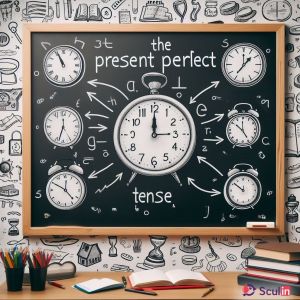PRESENT PERFECT TENSE
How it's Formed:
The present perfect tense is formed by using the auxiliary verbs "have" (for I, you, we, they) or "has" (for he, she, it) together with the third form of the verb (past participle). For example:
- "I have finished my homework."
- "She has lived in Paris for five years."
- "They have seen that movie many times."
- "She has finished her homework."
- "They have eaten dinner."
- "He has gone to the store."
Establishes Connection Between Past and Present:
The present perfect tense emphasizes the connection between a past action and its current state. For example, the statement "I have lost my keys" indicates that you still don't know where the keys are, but their loss continues to affect you since the time they were lost.
Emphasizes Completed Actions:
The present perfect tense highlights completed actions in the past, with their consequences or effects possibly still ongoing. For instance, "I have bought a new car" indicates that the purchase has been completed, and now you own a new car.
Narrates Past Experiences and Achievements:
The present perfect tense can be used to express past experiences or achievements. For example, "I have climbed that mountain" or "She has graduated from university."
Expresses Repeated Actions:
The present perfect tense can express actions that have been repeated over a specific period in the past. For instance, "I have visited that museum many times" indicates multiple visits to the museum within a specific timeframe.
Does Not Specify a Definite Time:
The present perfect tense does not specify the exact time an action took place but rather indicates a general time frame. For example:
- "She has visited many countries."
- "They have eaten sushi before."
The present perfect tense is widely used in everyday English conversation and writing. Therefore, it's essential to learn this structure when learning English, as it is a commonly encountered form.
The present perfect tense is an important way to express time and time intervals in English. When used correctly, it can convey past experiences, actions, and their consequences.


 Sculin Kids
Sculin Kids 